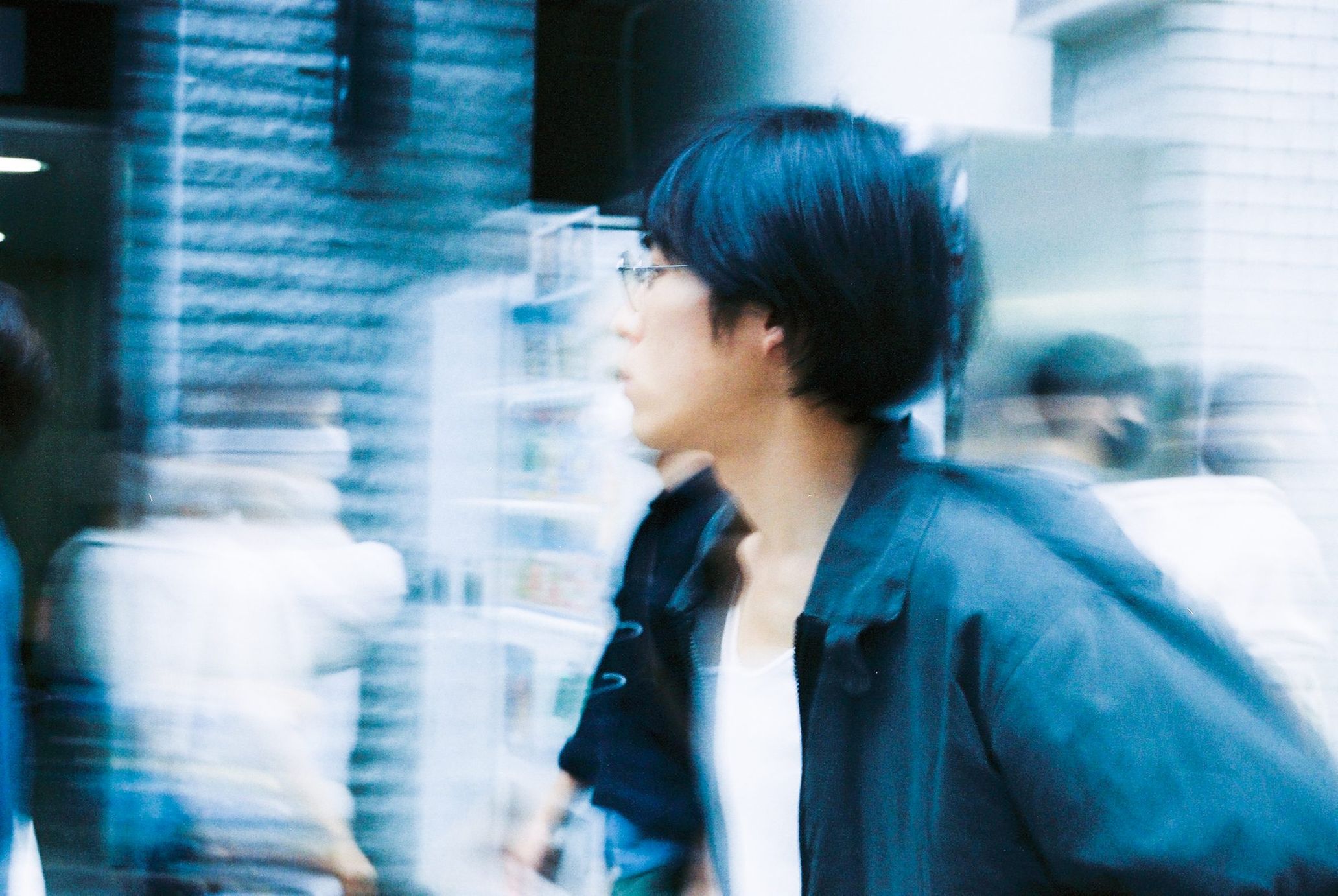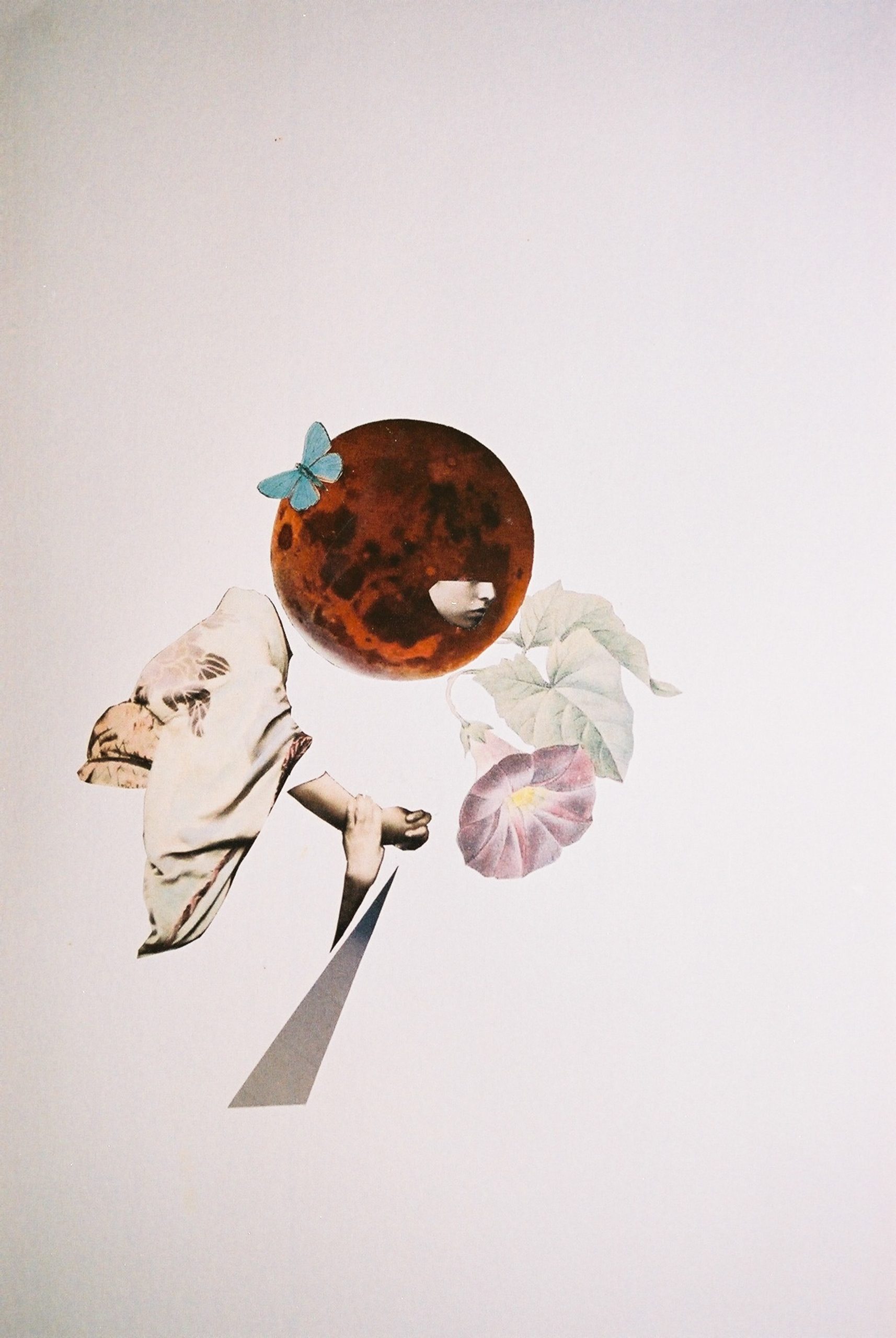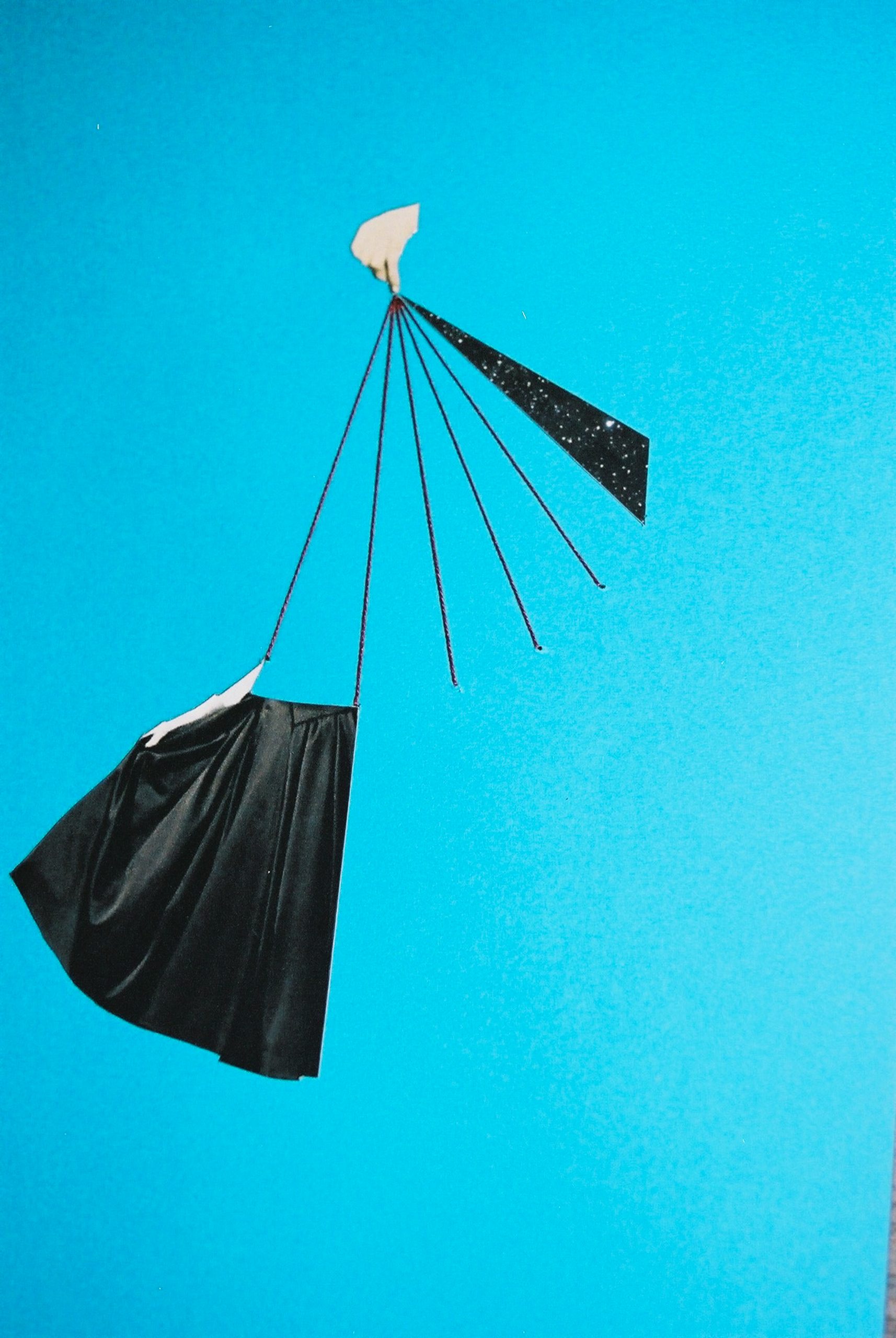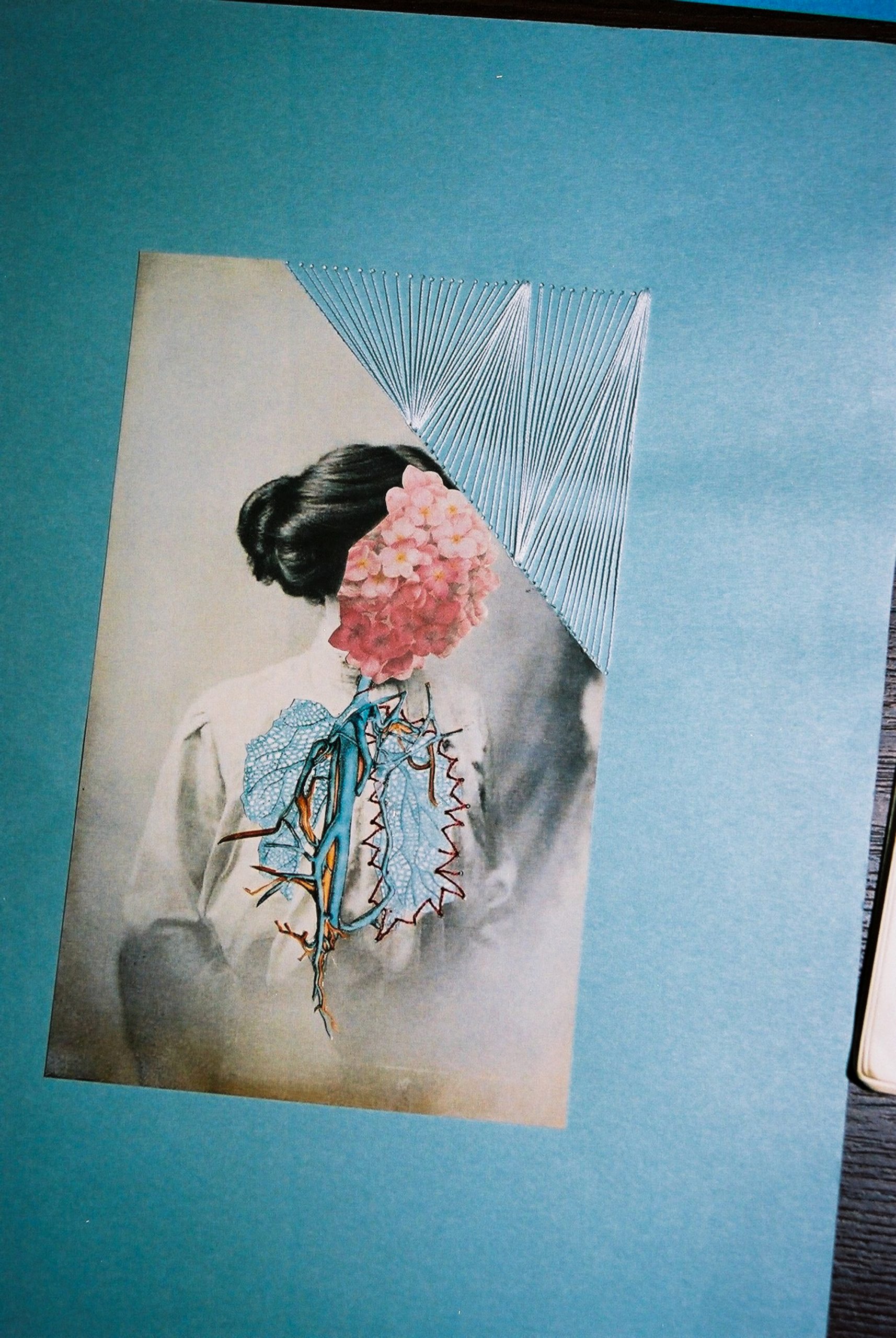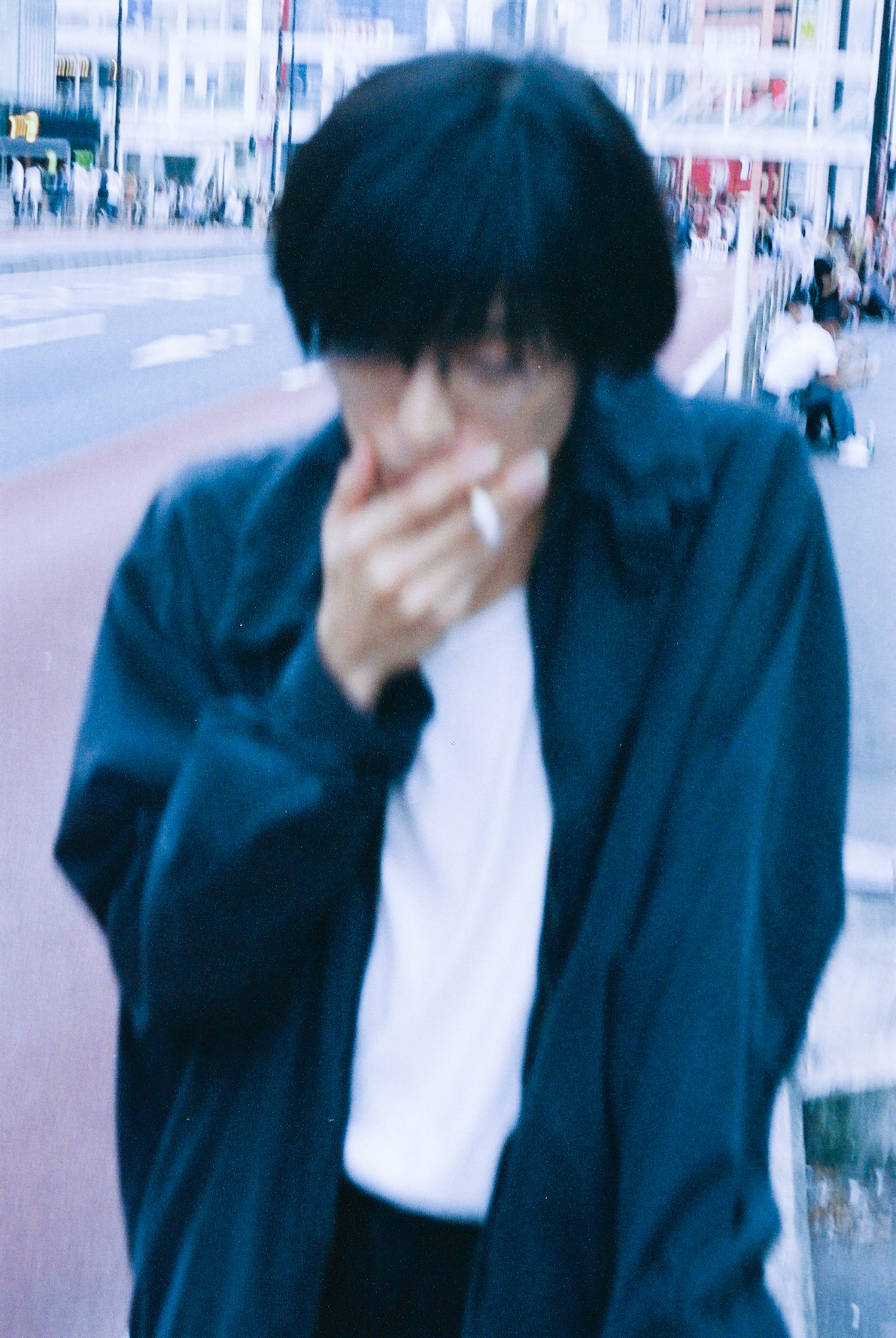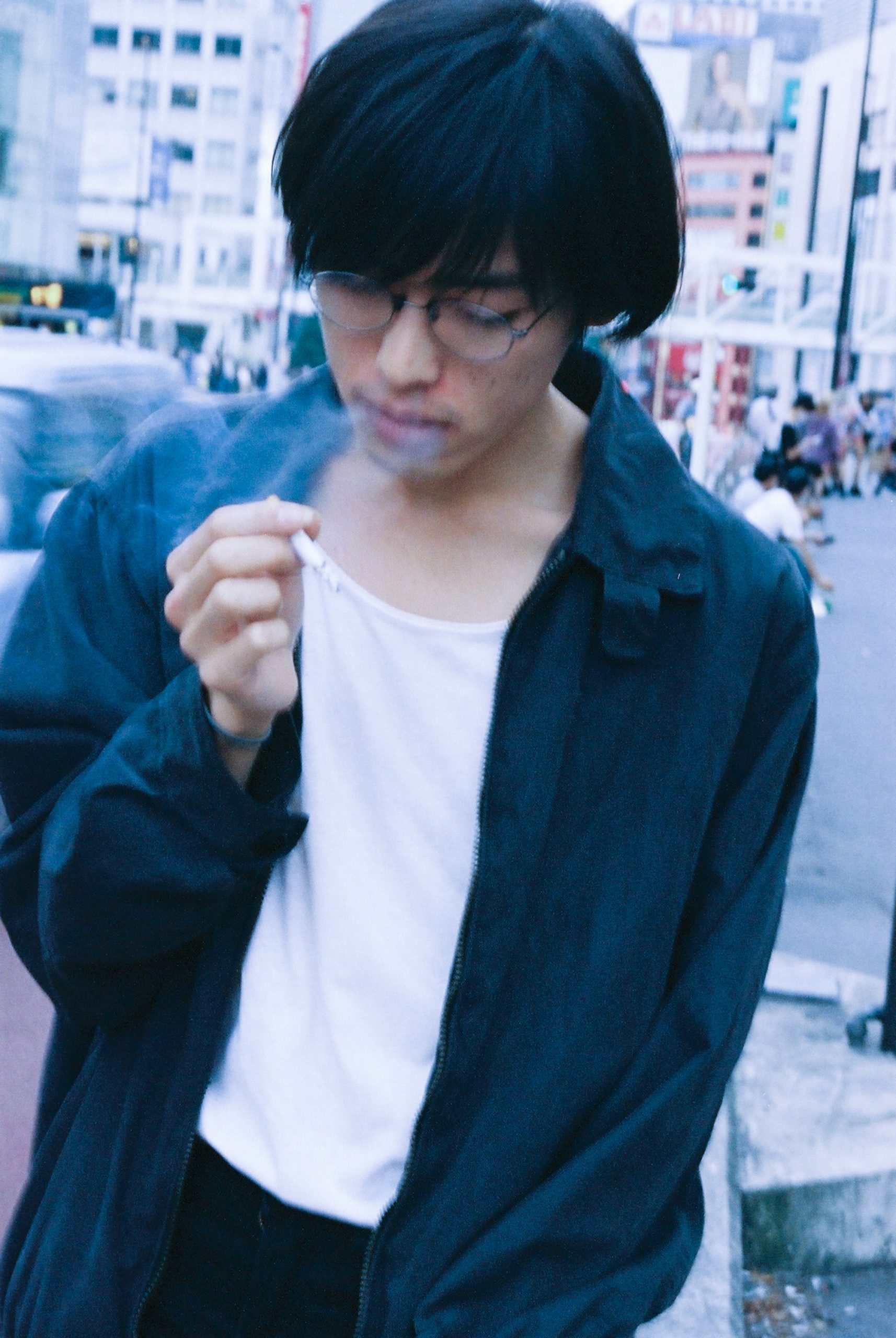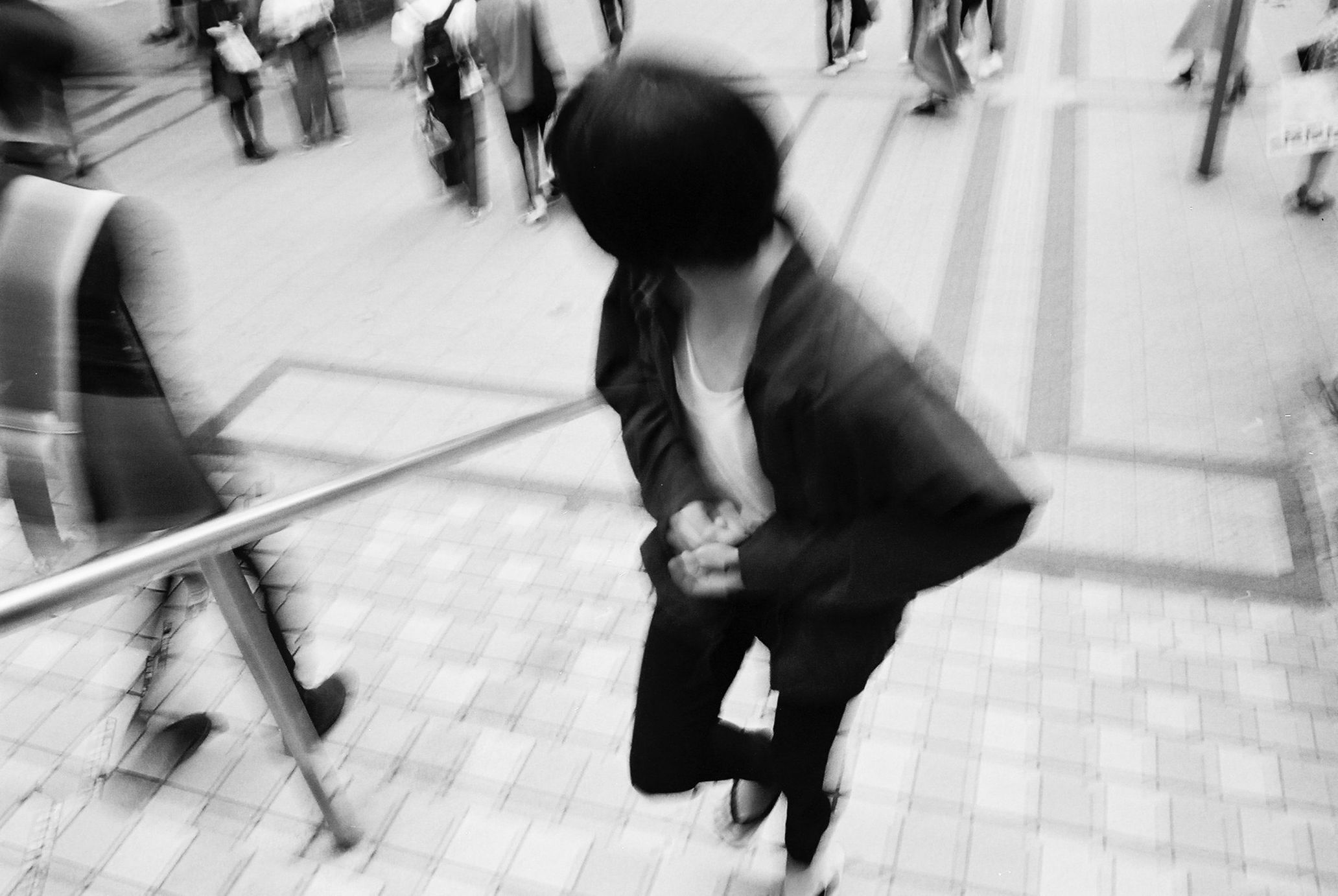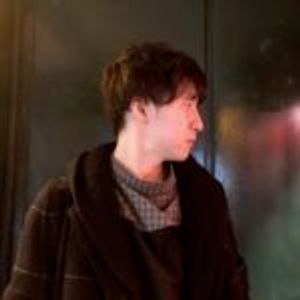Born in 1995, Ohzora Kimishima is a musician whose work is full of inspiration from different genres, including rock, pop, folk, jazz, and electronica; yet, no one genre defines him. If there is any defining factor to his music, it is his collage-like style that cuts and pastes different genres and elements of sound together to form a single universe.
Thus, the theme of this interview with Ohzora Kimishima was collaging. As a result, the way he describes his musical roots and lyrics connect to this theme.
At the beginning of our conversation, Kimishima held out a few sheets of paper. They were his own hand-crafted collages which had been used as jackets for his previous albums. The collages were created by hand, rather than cut and pasted digitally, and they were composed using not only paper, but also finely sewn threads.
2.used for “Yakedo ni Ame”
3.used for “Housou” released on November 11, 2020
I think with my hands and see with my ears
──When did you start making collages?
Ohzora Kimishima: Three years ago. I decided to release a solo demo and I wasn’t sure what to do about the jacket. I like drawing too, but I wasn’t confident enough in my ability to show people. But then I thought to try my hand at collaging, so I layered cut-out photos of the landscape from my parent’s window.
I like this collage artist named Toshiko Okanoue, and in particular, her piece “Haruka na tabi.” At first glance, it feels a bit emotionless and cold, but if you look closer, you can tell that it’s handmade. I felt this human warmth from the hand-cut quality. I figured I could make something like that, so I started making collages when my music was slowing down.
My hands are constantly moving when I create a collage. When I focus on cutting a photo at a certain angle, all other things disappear from my mind. That time is precious to me. It helps me reset. If time and circumstances permit, I can make three collages on a good day.
The time I spend thinking about how to arrange everything is maybe longer than the time my hands spend moving. It’s the same with music. At the sound mixing stage, I’m always torn on how to arrange the music.
I feel like everything in my head is connected, like I’m seeing with my ears and hearing with my eyes. It’s a bit like synesthesia. My favorite kind of music is the kind that makes you visualize a scene. Like when someone is singing about the ocean, and you can actually see the ocean. Music has that power. I’m not satisfied with my own music either unless it paints a picture.
I want to have people visualize a sunny fall day, the sun softly hitting the lace curtains, without actually describing it in words. With my new work, I thought about that a lot.
──Speaking of liking to work with your hands, you like playing guitar, right?
Kimishima: I love it.
──Whether you’re playing by yourself or with a band, I have this image of you smiling and playing guitar. Collaging and guitar are both things that you do with your hands, which makes me think that you’re a hand guy.
Kimishima: There’s part of me that thinks with my hands. After one of my live shows, you tweeted that I was like Egberto Gismonti. * I was really happy because I love Gismonti. I thought, someone noticed! (laughs)
*Egberto Gismonti: A Brazilian composer and multi-instrumentalist born in 1947.
──I feel like Gismonti is also hopelessly in love with the guitar.
Kimishima: I feel that Gismonti is a pianist who also plays guitar for fun. His playing technique is self-taught, so it has this sense of calmness and innocence that’s hard to compare to other artists. He also made his own 10-string guitar. I like that when he plays guitar, he’s like a kid. Gismonti is one of the people I’ve been really interested in for the past two or three years.
Non-performative sounds and the number of elements
──Have you always been into Brazilian music?
Kimishima: I love it. I especially love Antonio Loureiro*. His first album (“Antonio Loureiro,” 2010) is a work of art. Everything seems to flow forth from inside him. And the way the harmonies are strung together, with the melodies, makes everything come together into one cohesive piece. It made me wonder if I could also create something similar with my work.
There’s a kind of a melancholy quality to Loureiro’s first album. A gloomy darkness, where you can tell something in him compelled him to create. To me, that’s irreplaceable.
*Antonio Loureiro: A singer/songwriter, composer, and multi-instrumentalist born in Sao Paolo in 1986.
──Speaking of, Hakushi Hasegawa was also saying he liked Loureiro.
Kimishima: I actually ran into Hakushi when I saw the Antonio Loureiro Trio play in Japan last year.
──It’s funny that you and Hakushi reference the same music.
The music you two make isn’t exactly similar, but there are some commonalities. I think it’s the number of different elements in your music. It’s like you’re mixing all these elements without selecting any one thing. I think that’s what makes it feel like a collage of sorts. Do you try to put a lot of different elements in your work?
Kimishima: I think partially, I put a lot of elements in there on purpose. When I record, I like the sounds of clothes rustling, coughing, and other sounds that accidentally get picked up. They’re different from the sounds I intended to record, since the sounds are unaware that they’re being recorded and aren’t under pressure.
──The sound itself “performs” too.
Kimishima: Right, I like sounds that aren’t performing. I take the sounds I accidentally recorded in my voice memos, and then incorporate them into my work in a way that only I can tell.
I record the sounds I hear every day like they’re diary entries. Then, I try to incorporate the sounds that I like into the texture of a song. A lot of people may think of “texture” as the superficial layer of a song, but I think this should come before anything. I think it’s really important, like air or oxygen. When you put in sounds that only you can hear, your own style comes out in the music.
Corona, Fennesz, and Metal
──I feel like in the last few years, the world has had a 90s vibe. In short, the 90s were full of disorganized thoughts, which all felt raw and real. At the same time, I think there was also this listless feeling expressed by lo-fi and grunge artists, that the world was going by day by day, without really improving. In recent days, especially since the coronavirus, the world has a similar vibe. In the midst of an information overload, the days seem to crawl by. And I think the amount of information, and that listless feeling, is something that’s in your music as well. How do you connect with the outside world?
Kimishima: I used to want the two to be as unrelated as possible. I wanted my music to be in a place that existed independently of the world. But since the coronavirus, the world has ended up influencing me, and I came to realize that I don’t mind that. It wasn’t until coronavirus that I became aware of how my work was influenced by external factors. Maybe it’s because I’ve spent more time reflecting on my own.
When I released my first EP (“Gogo no Hanshakou”), a lot of people told me that it was very 90s, but I actually wasn’t influenced at all by popular 90s music. I heard Radiohead for the first time a year and a half ago, and I only know one Smashing Pumpkins song. I think they’re cool, but part of me has avoided music that everyone else listened to.
I actually started thinking about making music because of Fennesz’s* “Endless Summer” (2001). I was struck by the fact that one person could make music with such a wide range. I felt like I was looking directly in his brain. The timeline is disjointed, but everything of importance to him is in there. I looked up the equipment Fennesz used in this album, and it was just a laptop, a Jazzmaster guitar, and a fuzz pedal. I was moved by the fact that music he made, using the bare minimum of equipment, had reached young people in this corner of Japan. I wanted to do the same thing. Combining recordings from different time periods into one track might be influenced by Fennesz.
*Fennesz: A guitarist and electronic musician from Australia. He is known in Japan for his collaboration with Ryuichi Sakamoto.
──I see. That rawness, showing exactly what’s happening in your brain, might be why it felt 90s to me.
Kimishima: By the way, I was constantly listening to metal before I came across Fennesz.
──What kind of metal were you listening to?
Kimishima: Meshuggah*. I went through a period where I was going to jam sessions at a live house in Fussa, and a drummer there lent me a Meshuggah CD. It had a sort of “molten iron” feel to it, which was really cool.
Also, I listened to Dream Theater** a lot. In particular, I really loved their album, “Train of Thought” (2003). This album is like a picture-perfect sound of despair. (laughs) It has this sluggish heaviness and darkness the whole time. I feel like whenever I’m in a weird place, I can listen to this and feel soothed.
Other than that, I listened to ridiculously skilled jazz fusion artists. People like Greg Howe and Richie Kotzen, who are just amazing at guitar. (laughs) Metal and fusion are kind of like sports. There’s a competitive spirit about how quickly and accurately you can play, which I find beauty in. I feel energized when I listen to it. Maybe it’s something people who like to move their hands like.
*Meshuggah: A Swedish metal band, active from 1980 into today. They’re popular for their experimental style, including complex rhythms and a heavy use of noise.
**Dream Theater: An American band that was a pioneer of progressive metal and has been popular since the mid 1980s.
Expressing yourself without revealing too much.
──In your new EP that’s coming out in November, “Housou,” I like that you can hear the small details in the music. I felt like the quality of the sound had improved. The songs are catchy, too, and easily get stuck in your head. There are a lot of memorable touches throughout, like the neat repetition of melodies and rhyming lyrics.
Kimishima: Well first, the equipment I used actually has improved. I love lo-fi music, or music that isn’t considered high-quality, but this time I thought that high-quality music felt right. (laughs) I also tried to bring the vocals a bit more to the forefront than I have in previous albums. But bringing my voice forward is scary. A voice is sort of like a signature, or rather, it reveals things about a person. If you’re familiar with the face and voice of the artist, it affects how you listen to their music. That’s scary to me. So with my past music, I would make my voice really quiet and crank up the reverb. I want to express myself, but I also don’t want to reveal too much.
I write lyrics the same way. I can’t write a song where someone else is the protagonist because it doesn’t feel right. I can only write about my own memories and ideas, but I don’t want my inherent nature as a person to be revealed. In this day and age, people can get their words out quickly. But I wonder if we can really call those “words.” There’s a line in a poem by Noriko Ibaragi that says something like, “There are too many things that only look like words.” Even if it’s a bit ridiculous, I think it sums up what I think is strange about today’s world. Words are used in a really meaningless and frivolous way. For me, I want words that don’t just look like words. Essentially, the way we string words together should be wilder and more beautiful, and from there you should be able to feel a sense of time and distance.
──In general, words are a tool for mutual understanding. We use words to get closer to others. But you use words to create distance between your message and the audience. That may be the reason why the lyrics of your songs have a collage-like quality to them.
Kimishima: Yeah. I consider myself to be someone who has a lot of things to say, but if I wanted to just say those things directly, then I may as well just write essays. I don’t write lyrics just to convey a message. As long as you can somehow feel the humanness from the overall lyrics, that’s fine. That’s how I choose my words.
Ohzora Kimishima
Born in 1995, Kimishima started his music career in 2014 when he began releasing music featuring his own lyrics, compositions, arrangements, performances, and vocals on SoundCloud. He released his first EP “Gogo no Hanshakou” in March 2019 and his first single “Sandou/Hanagumori” in July. In the same year, he also performed at Fuji Rock Festival’s Rookie A Go-Go stage along with a band. On November 11th of this year, he will release his second EP, “Housou.” Alongside his personal projects, he has also performed live and in the studio as a guitarist for artists such as Ibuki Takai, Kisa Sakaguchi, Fujin Club, Kayoko Yoshizawa, and more. He also creates background music and compositions.
https://linktr.ee/hainosokomade
Photography Ko-ta Shouji
Translation Aya Apton

